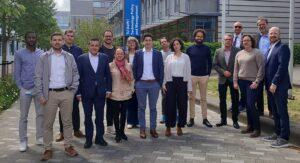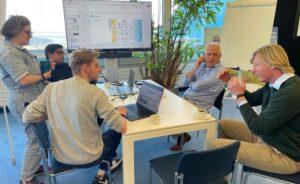Georgina Mukwirimba applied the City Blueprint framework in Harare (Zimbabwe). In this blog, she shares her findings.
The City Blueprint tool is a straightforward tool, easy to use, and it gives results quickly. It enables cities to scan their urban water cycle services swiftly, identifying their water management challenges. The cities can now narrow down into areas where there is room for improvement and find solutions to improve. The tool enables to build databases quickly across the world for future reference whilst putting young professionals in front, hence training them. It uses what I could call a “learning by doing approach”, and the tool is continuously improved and tailored to suit various contexts.
I implemented the tool in Harare, Zimbabwe, which is the capital city of the country. I learnt that to deliver water and sanitation for all, where no one is left behind and services are up to standard, close collaboration of all the water and sanitation sector stakeholders is required. They need to work together, not in silos, have dialogues, and jointly discuss the issues and solutions. Political will is critical for success: the central government and politicians need to support the local government. An enabling environment is overly crucial to support municipalities to improve their services, from upgrading infrastructure to sound policies.
Most African countries do not have data for their cities readily available online, which means that the assessment starts with contacting the municipalities/ councils or relevant stakeholders, keeping in close contact with them to gather data.
My conclusion is that the City Blueprint Framwork is a great tool, a first of its kind that uses the IWRM approach with so much potential and benefits. Cities can fully take advantage of it if they indeed put the learnings into actual action!


